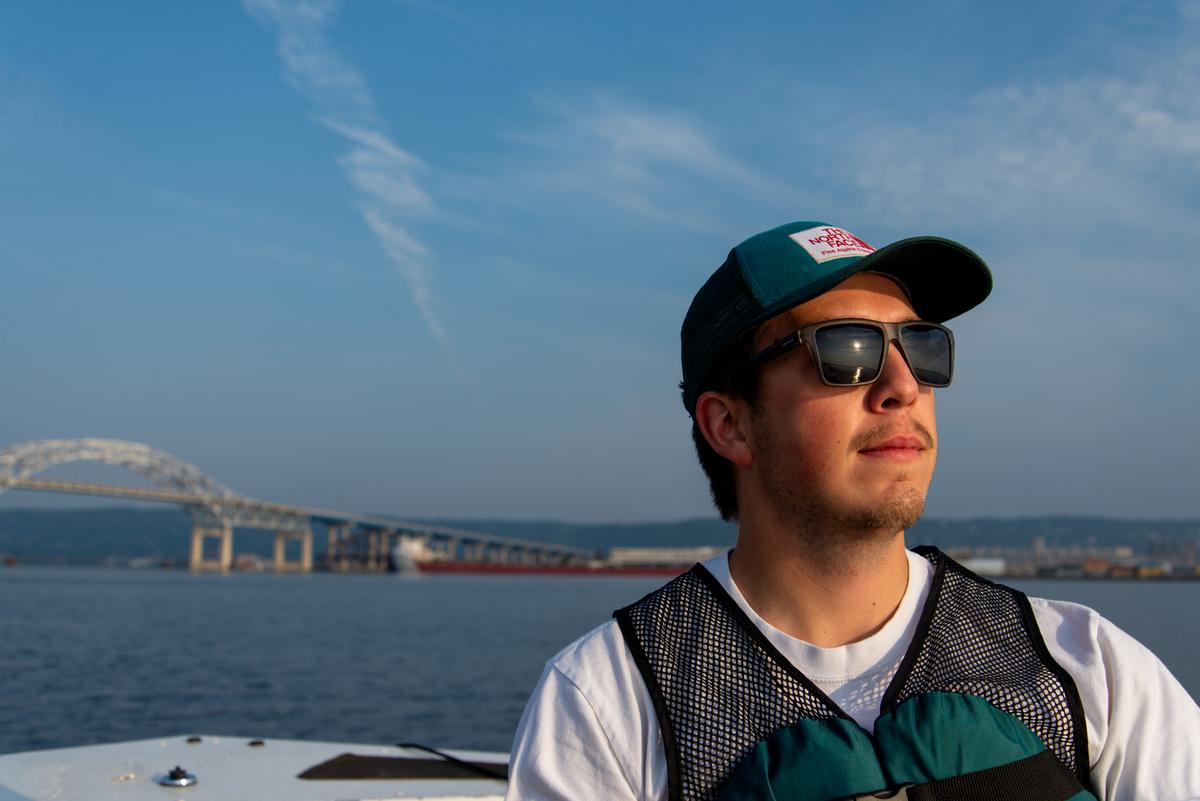Photo: Peter Birschbach in the field on the St. Louis River Estuary. Photo by Ben Austin.
Algae in the Estuary
Cyanobacterial blooms have been recognized as a problem in the St. Louis River Estuary, but in 2021 the Estuary experienced its first detected toxic bloom. Also known as ‘blue-green’ algae, some cyanobacteria can be highly toxic under the right conditions. The bloom caught the attention of scientists and the State of Minnesota which led to increased funding for estuary monitoring.
That’s where Peter Birschbach comes in. Peter is a research assistant at the Natural Resources Research Institute, and a master’s candidate in UMD’s Water Resources Science program. He’s now working with a team of researchers to comprehensively monitor the St. Louis River Estuary. The team is made up of members from NRRI as well as the Lake Superior National Estuarine Research Reserve.
Peter splits his time at NRRI between fieldwork, labwork, and microscopy. In the field, a small crew of researchers regularly take a motorboat to several sampling locations around the estuary. Packed full of equipment, the boat can conduct a variety of on-site measurements as well as take samples which are analyzed back at NRRI’s labs. One particularly hard-to-reach sampling location requires researchers to use canoes that can fit under a small bridge.
Water samples are sterilized and brought to NRRI’s labs. Peter analyzes the water samples under a microscope, identifying and counting algae species. This analysis gives a greater understanding of the ecological trends in the estuary, such as the rising rate of algal blooms.
As algae decompose, oxygen is pulled out of the water, leading to low oxygen, or anoxic, conditions. Under such conditions, sediment in the water releases trapped phosphorus, supplying nutrients for new algae and potentially causing sudden blooms. Warmer temperatures may also be to blame, as they promote anoxic conditions and make cyanobacteria grow faster.
By understanding these processes and the potential negative effects of algal blooms, damage to ecosystems can be mitigated as the environment changes.
An Early Interest
Peter grew up on Lake Winnebago and developed an early interest in ecology.
“I loved swimming, fishing, kayaking, basically anything in the water as a kid,” said Peter. “But in late summer every year, the lake was unusable and foul-smelling for weeks at a time due to surface scums and toxins formed by cyanobacteria.”
As an elementary school student, Peter wrote a letter to the local Department of Natural Resources asking for more information about algae on the lake.
“They were kind enough to answer my letter. So, wanting to change this as a kid is definitely part of what inspired me to take the path I am currently on,” said Peter.
Peter’s interests are not limited to algae. He uses his free time to monitor Piping Plovers, tracking the endangered bird's migration patterns around the Great Lakes.
Currently Peter plans to continue researching aquatic ecosystems.
“I would like to continue doing phytoplankton ecology-related research, especially with harmful algal blooms being an issue more relevant than ever,” said Peter. “I’m excited to see what research initiatives I will be involved in next and what fascinating places I will get to study and hopefully make a positive impact in this field.”
